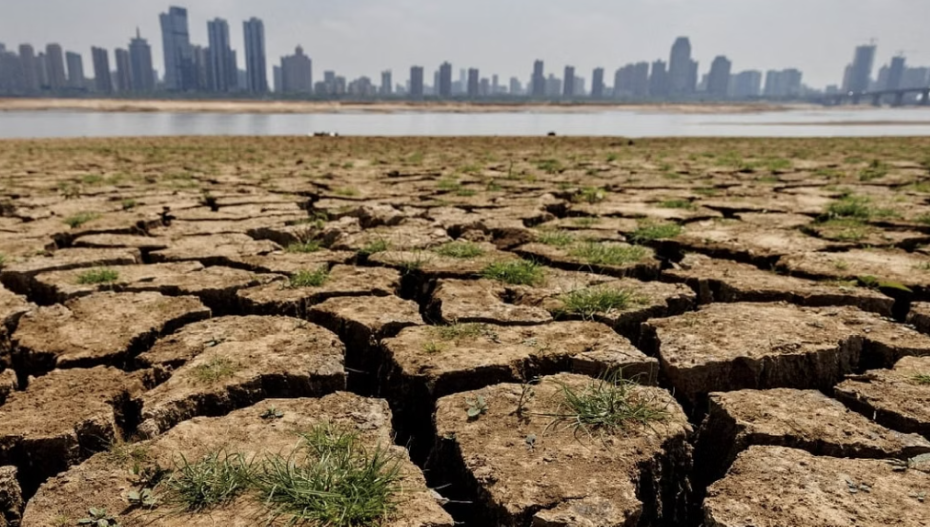Asia continued to bear the brunt of weather, climate and water-related hazards in 2023, making it the world’s most disaster-hit region, according to a new report by the World Meteorological Organization.
Floods and storms led to the highest number of reported casualties and economic losses, and the impact of heat waves intensified, said the World Meteorological Organization’s (WMO) State of the Climate in Asia – 2023 report.
According to the report, sea-surface temperatures in the northwest Pacific Ocean hit record highs, and even the Arctic Ocean experienced a marine heat wave.
WMO Secretary-General Celeste Saulo said, “Many countries in the region experienced their hottest year on record in 2023, along with a barrage of extreme conditions, from droughts and heat waves to floods and storms. Climate change exacerbated the frequency and severity of such events, profoundly impacting societies, economies, and, most importantly, human lives and the environment that we live in.”
Climate activist Harjeet Singh said the new report highlights the profound vulnerabilities of the region to the escalating threats of climate change.
“These catastrophic impacts, caused by increasing surface temperatures, glacier retreat and sea level rise, underscore the critical need for access to precise, projected climate information and tailored meteorological services. Such tools are indispensable for enhancing disaster preparedness and implementing effective adaptation strategies to safeguard lives and livelihoods. It is crucial to emphasise the need for robust climate finance mechanisms to scale up adaptation and address loss and damage,” he said.
Citing the Emergency Events Database, the report said 79 disasters linked with hydro-meteorological hazards struck Asia in 2023, with floods and storms accounting for over 80 per cent of incidents, resulting in more than 2,000 fatalities and affecting nine million people.
The annual mean near-surface temperature over Asia in 2023 was the second highest on record, 0.91 degrees Celsius above the 1991-2020 average and 1.87 degrees above the 1961-1990 average. Japan and Kazakhstan each had record warm years.
In India, severe heat waves in April and June resulted in about 110 reported fatalities due to heatstroke. A major and prolonged heat wave affected much of southeast Asia in April and May, extending as far west as Bangladesh and eastern India, and north to southern China, with record-breaking temperatures.
Parts of the Turan Lowland (Turkmenistan, Uzbekistan, Kazakhstan), the Hindu Kush (Afghanistan, Pakistan), the Himalayas, around the Ganges and lower course of the Brahmaputra rivers (India and Bangladesh), the Arakan Mountains (Myanmar) and the lower course of the Mekong river reported below-normal precipitation.
Southwest China suffered from a drought, with below-normal precipitation levels nearly every month of 2023, and the rain associated with the Indian summer monsoon was below average.
In June, July and August, several floods and storm events resulted in more than 600 reported deaths across India, Pakistan and Nepal. Heavy rainfall led to flooding in Saudi Arabia, the UAE and Yemen.
In August and early September, the far eastern part of the Russian Federation suffered catastrophic flooding in one of the largest disasters in recent decades, affecting about 40,000 hectares of rural land.
The High-Mountain Asia region is the high-elevation area centred on the Tibetan Plateau and contains the largest volume of ice outside of the polar regions, with glaciers covering an area of around 1,00,000 square kilometres. Over the last several decades, most of these glaciers have been retreating, and at an accelerating rate.
Twenty out of the 22 observed glaciers in the High-Mountain Asia region showed continued mass loss. Record-breaking high temperatures and dry conditions in the east Himalayas and most of the Tien Shan exacerbated mass loss for most glaciers.
During the 2022-2023 period, Urumqi Glacier No 1 in eastern Tien Shan recorded its second highest negative mass balance since measurements began in 1959.
The WMO said warming of the upper-ocean (0-700 metres) is particularly strong in the north-western Arabian Sea, the Philippine Sea and the seas east of Japan, more than three times faster than the global average.
Marine heat waves — prolonged periods of extreme heat that affect the ocean — occurred in a large area of the Arctic Ocean, eastern Arabian Sea and the northern Pacific, and lasted three to five months.
In 2023, 17 named tropical cyclones formed over the western north Pacific Ocean and the South China Sea. This was below average but there were still major impacts and record-breaking rainfall in countries, including China, Japan, the Philippines and the Republic of Korea.
In the north Indian Ocean basin, the extremely severe cyclonic storm Mocha made landfall along the Rakhine coast in Myanmar on May 14, causing widespread destruction and 156 deaths.
Also Read: Fraudsters Cheat Cadila Pharma VP Of Rs 3.95 Lakh












